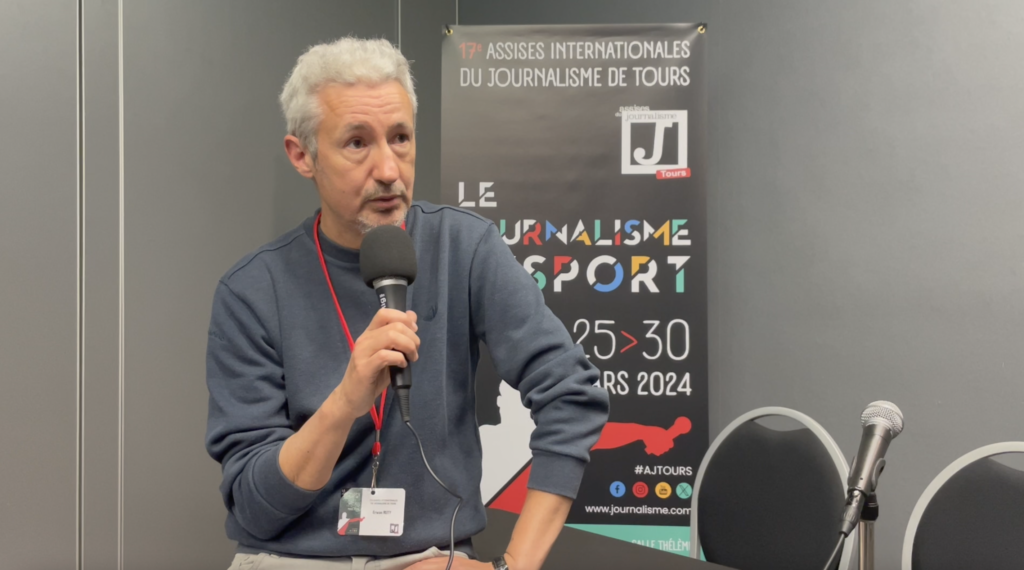On Monday the 26th of March, at les Assises du Journalisme in Tours, a number of speakers took part in a conference entitled: “The death of Nahel: editorial lessons to be learned”. It was an opportunity to look again at the issues surrounding media coverage of underprivileged neighbourhoods. We talked to two experts who gave their analysis on the matter.
On Tuesday the 27th of June 2023, a young man called Nahel was shot at point-blank range by police officers during a traffic stop. He was seventeen.
Over the following nights, in Nahel’s home town of Nanterre, and more specifically in his neighbourhood, the Pablo-Picasso district, the streets were ablaze with the anger of residents towards the murderous police violence. The movement then spread throughout France. The underprivileged neighbourhoods, which are the first victims of police violence, roared with anger. For four nights, the violence reverberated through the streets.
These events gave rise to a great deal of ambivalent journalistic coverage. The subject of underprivileged neighbourhoods is generally a point of tension in the French media.
The conference entitled “Nahel’s death: editorial lessons to be learnt”, led by Nordine Nabili, head of the IHECS journalism master’s programme, was an opportunity to look again at the journalistic treatment of this case and, more broadly, at the way which the realities of underprivileged neighbourhoods are dealt with in the media. While the starting point for this discussion was the French context, the lessons to be learned go far beyond France and raise questions for worldwide journalists about how they cover underprivileged neighbourhoods.
First of all, what is interesting to analyse are the different editorial choices that have been made in the media. such as the choice of words, expressions, and what is said and what is not said. But also the sources, whether institutional or not, the assessments made, the legitimization of violence or not, and so on.
Erwan Ruty, former director of Medialab 93 and author of “Une histoire des banlieues françaises” took part in the conference. He gives us his analysis :
To understand why the media have difficulties in properly addressing the issues concerning the underprivileged neighbourhoods, it is interesting to look at the social identity of the journalists who cover them. Once again, Erwan Ruty gives us his analysis and stresses the importance of having journalists with knowledge of these neighbourhoods, either because they grew up there or because they have developed strong links and expertise in these geographic areas :
In order to achieve consistent media coverage of underprivileged neighbourhoods, training young residents of these areas and raising journalism and media awareness is important. Akli Alliouat, founder of the popular education association Kaïna, based in the underprivileged Mosson district of Montpellier, gives us his insight on the issue and describes the initiatives he and his association are carrying out in his community :
This article was written by Blanche Constant and Léa Perron
